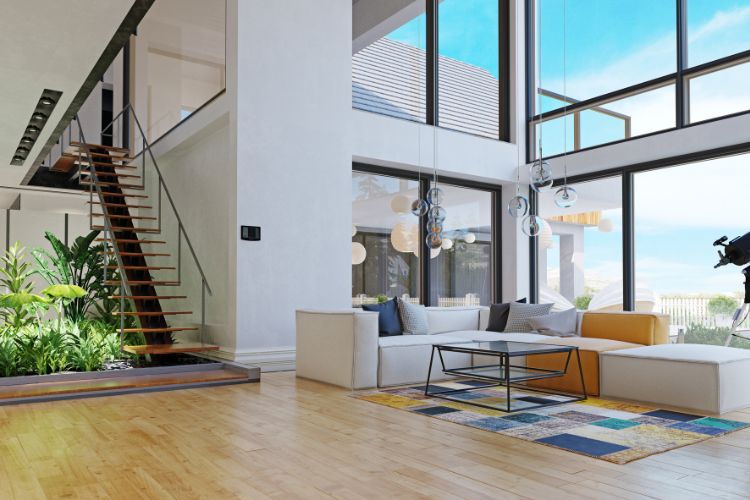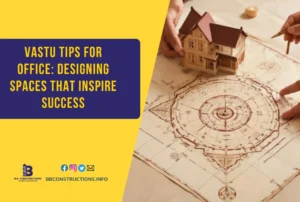![]()
In today’s world, modern homes rule with their efficiency and stylish home exterior design. But why do some still prefer traditional homes? Is it cost, comfort, or nostalgia? Let’s explore the differences between modern and traditional designs. First, what defines a traditional home and a modern home? Modern homes are characterized by open-plan living, clean lines, and ample natural light through large windows. Tips for Vaastu on home design enhance positive energy flow. These include placing the entrance well, positioning furniture thoughtfully, and using specific colors and elements for prosperity and harmony.
Traditional homes usually look similar on both sides and have designs that look old-fashioned. They often have things like tall pillars, porches, and triangle-shaped roofs. Outside, you might see hanging baskets, shutters, and colorful flower boxes, making the house look pretty.
Traditional homes prioritize setting up elements evenly on both sides, such as windows and doors, rather than placing them in the center. Additionally, they emphasize arranging things thoughtfully to achieve a pleasing and balanced design.
These homes often use dark colors, strong shapes, and interesting textures and patterns. But if you’re thinking about getting a traditional-style home and have a big family, it might not be the best idea because these homes usually work better for smaller families with fewer people sharing each room.
Different places might have their own versions of traditional styles, depending on what people like. But these basic ideas can help you figure out if a house is traditional or not.
What Makes a Modern Home?

In contrast to traditional designs, modern home exterior design embraces open-plan living spaces, integrating large windows and glass doors to invite natural light. These homes boast clean lines, often concealed beneath a modern roofline or minimalist “box” shape.
Combining ample space with style, contemporary homes strike a balance, avoiding the overwhelming or cluttered feel often associated with modern architecture. While modern designs tend to incorporate fewer details compared to traditional styles, they don’t lack character or charm.
Typically, modern designs employ darker exterior colors contrasted with lighter tones indoors. Bright lighting complements dark walls, amplifying natural light and erasing shadows cast by furniture. Smooth curves, not side angles, dominate modern rooms, ensuring clean lines throughout each space. Attention to detail remains a hallmark of these structures.
Also Read: Minimalistic Designs for Home Interiors.
What Are the Key Differences Between Modern vs. Traditional Design?
1. Architecture
Traditional buildings commonly feature materials like brick or stone, contrasting with modern constructions that favor glass and occasionally steel, depending on their structural placement.
2. Furniture
Traditional furniture, ideal for those drawn to 19th-century aesthetics, typically comprises dark, weighty wood, often found in historic settings. In contrast, modern furniture adopts a sleek and unembellished appearance, emphasizing simplicity without compromising comfort. Its materials often include a mix of glass and metal, reflecting the open floor plans characteristic of modern homes. Modern furniture tends to be more maneuverable, facilitating flexible arrangements in larger living spaces while preserving a minimalist ambiance.
3. Colors
Modern design favors bold and darker color schemes, allowing homeowners to choose from a simple yet stylish palette to suit their desired ambiance. Neutrals and vibrant tones like reds and yellows are prevalent in modern home designs. Conversely, traditional designs lean toward earthy hues such as greens, browns, and occasional touches of blue for contrast. Simplicity stands as a central principle in modern style choices.
Vaastu Tips for Wealth and Prosperity

Vaastu Shastra, an ancient Indian architectural science, focuses on good energy flow in homes. While it’s not a substitute for hard work or financial planning, following Vaastu principles can help make your home a positive place for wealth and prosperity.
Here are some Vaastu for home to attract wealth and prosperity to your home:
1. Entryway:
Ensure your home’s entrance is well-lit, clean, and obstacle-free. Consider using auspicious symbols like Om or Swastika to invite positive energy.
2. Safe Placement:
If you have a safe or locker, place it in the south or southwest direction to attract financial stability and wealth.
3. Money Plant:
Position a money plant in the southeast corner or near the entrance for good luck, prosperity, and financial growth.
4. Kitchen:
Keep the kitchen clean and organized, and place the stove in the southeast corner to enhance wealth attraction. Avoid positioning it opposite the sink or refrigerator.
5. Wealth Corner:
Identify the southeast corner as the wealth corner of your home. Keep it clean, well-lit, and clutter-free. Consider placing symbols of wealth, like a small puja altar or a representation of Lord Kuber.
6. Water Features:
Place a fountain or aquarium in the north or northeast direction to symbolize wealth and attract positive energy.
7. Declutter:
Regularly declutter and organize your home to maintain a positive flow of energy and promote prosperity.
Final Thoughts
In today’s diverse architectural landscape, modern home exterior design are characterized by their sleek designs and efficiency, while traditional homes continue to hold an allure for their timeless charm and cozy atmosphere. The distinctions between these styles lie in their architectural features, furnishings, color palettes, and overall ambiance.
Traditional home exterior design exude an old-world charm with their symmetrical designs, classic elements like tall pillars and porches, and a preference for dark colors and intricate patterns. Their emphasis on symmetry and balanced arrangements reflects a sense of stability and tradition.
On the other hand, modern homes epitomize contemporary living, favoring clean lines, open spaces, and an abundance of natural light through large windows and glass doors. These homes embrace simplicity, minimalism, and a blend of dark exteriors with lighter interiors, evoking a sense of spaciousness and sophistication.
The differences in architecture, furniture styles, and color schemes delineate the essence of these design approaches. While traditional designs often evoke a sense of nostalgia and comfort, modern homes embody efficiency and functionality, catering to the preferences of diverse homeowners.
Moreover, the application of Vaastu Shastra principles adds another layer to home design, aiming to foster positive energy flow and prosperity within spaces. These ancient Indian architectural principles offer guidance for those seeking to infuse their homes with auspicious elements and arrangements, contributing to an environment conducive to wealth and well-being.
Whether one leans toward the classic allure of traditional design or the contemporary appeal of modern aesthetics, each style has its own unique characteristics and appeal. Both traditional and modern homes hold their place in the architectural spectrum, catering to individual preferences, comfort, and the desired ambiance of homeowners. Ultimately, the choice between traditional and modern designs often reflects personal aesthetics, comfort, and lifestyle preferences, shaping the sanctuaries we call home.
Also Read: Unbelievable Home Maintenance Tips to Keep Your Space in Top Shape!







